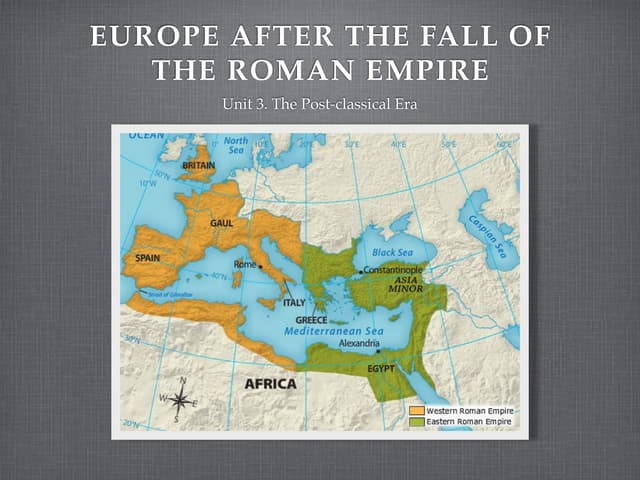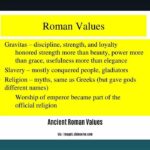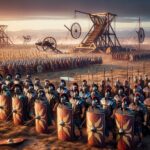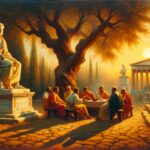The fall of the Roman Empire in the 5th century AD irrevocably transformed Europe. While the empire’s physical presence vanished, its influence continued to permeate the continent’s development. This period, often mischaracterized as the “Dark Ages,” was a time of profound change, cultural innovation, and the birth of new societal structures. Let’s delve into how Europe reshaped itself in the wake of Roman decline, exploring the echoes of a fallen empire and the rise of new powers.
Europe After the Fall of the Roman Empire: A Continent Reinvented
Imagine a Europe devoid of the Roman Empire’s rigid structure: its legions, emperors, and sprawling network of roads. This was the reality of the 5th century AD. The empire, once a symbol of power and order, had fragmented, leaving a void that spurred a period of dramatic transformation.
The Roman Empire, despite its achievements, had become stagnant. Its rigid systems stifled innovation and limited individual expression. However, its collapse unleashed a wave of creativity and adaptation. Freed from centralized control, diverse groups, including the Goths, Franks, and Lombards, seized the opportunity to establish their own kingdoms. These emerging powers, once relegated to the fringes of the empire, brought their unique customs, languages, and forms of governance, creating a mosaic of independent entities across the continent.
This fragmentation, while fostering diversity, also fueled conflict. Without the Roman military to maintain order, power struggles and territorial disputes erupted. Yet, amid the tumult, a distinct European identity began to emerge—a tapestry woven from the remnants of Roman heritage and the vibrant cultures of its successors.
The legacy of Rome continued to resonate. Its influence could be seen in the languages spoken, the legal systems adopted, and the architectural marvels that dotted the landscape. The Roman Empire may have fallen, but its spirit lived on, shaping the trajectory of European civilization.
The Fall of the Roman Empire: How Did It Happen?
The fall of the Roman Empire was not a single catastrophic event but rather the culmination of centuries-long trends. Internal decay, overexpansion, and external pressures coalesced, gradually weakening the once-mighty empire.
Internally, Rome was plagued by moral decline, political corruption, and economic instability. The very foundations of Roman society—its shared values and civic virtue—eroded, making it susceptible to both internal strife and external threats.
Rome’s insatiable appetite for expansion, while initially a source of wealth and power, ultimately contributed to its downfall. The vast distances and diverse cultures incorporated into the empire proved increasingly difficult to manage. The Roman military, stretched thin across a vast territory, struggled to contain rebellions and repel invaders.
The defeat of Emperor Valens by the Goths at the Battle of Adrianople in 378 CE marked a turning point. This stunning loss shattered the myth of Roman invincibility and emboldened other enemies. The empire, weakened from within and facing mounting external pressures, began its slow but inexorable decline.
To fully grasp the significance of this period, we invite you to explore a detailed timeline of the fall of the Roman empire. This comprehensive resource provides a chronological overview of the key events and factors that led to the downfall of one of history’s most influential empires.
Life After Rome: Exploring the New Kingdoms of Europe
With the Roman Empire shattered, Europe transformed into a patchwork of independent kingdoms, each vying for power and influence. This fragmentation, while fostering cultural diversity, also led to political instability and frequent conflict.
From the ashes of Roman rule rose new powers: the Franks in Gaul, the Visigoths in Spain, the Ostrogoths in Italy, and the Anglo-Saxons in Britain, to name a few. These successor kingdoms, while distinct in their customs and traditions, shared a common thread. They incorporated elements of Roman governance, law, and infrastructure, adapting them to suit their needs.
This fusion of Roman and Germanic traditions laid the foundation for the development of medieval Europe. Christianity, once a persecuted sect within the Roman Empire, flourished in its absence. Embraced by both commoners and rulers, it became a unifying force, spreading rapidly across the continent and shaping the religious and cultural landscape of the West.
The Rise of Christianity: A New Spiritual Force
The rise of Christianity was perhaps the most significant transformation in post-Roman Europe. From its humble beginnings as a persecuted sect, it rose to become the dominant faith, fundamentally shaping the values, culture, and institutions of the Western world.
Key Takeaways:
- Appeal of Compassion: Christianity’s message of love, forgiveness, and equality resonated deeply in a world marked by uncertainty and injustice.
- Imperial Support: The conversion of Emperor Constantine in the 4th century AD proved pivotal, granting Christianity legal status and imperial patronage.
- Unifying Force: The Church provided a sense of continuity and shared identity across a fragmented Europe, fostering a sense of community that transcended political boundaries.
- Cultural Influence: Christian ideals permeated art, literature, music, and architecture, leaving an enduring legacy on Western civilization.
The Church, with its hierarchical structure and emphasis on universal values, provided stability and spiritual guidance during a time of profound change. It became a central institution, wielding considerable influence over both the spiritual and secular realms.
- Crypto Quotes’ Red Flags: Avoid Costly Mistakes - June 30, 2025
- Unlock Inspirational Crypto Quotes: Future Predictions - June 30, 2025
- Famous Bitcoin Quotes: A Deep Dive into Crypto’s History - June 30, 2025
















